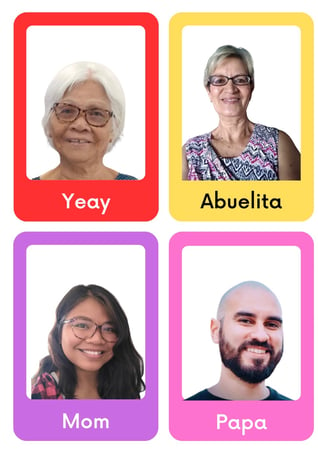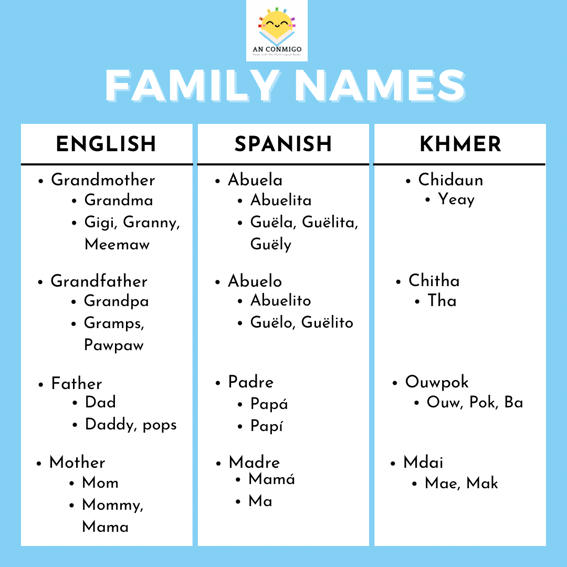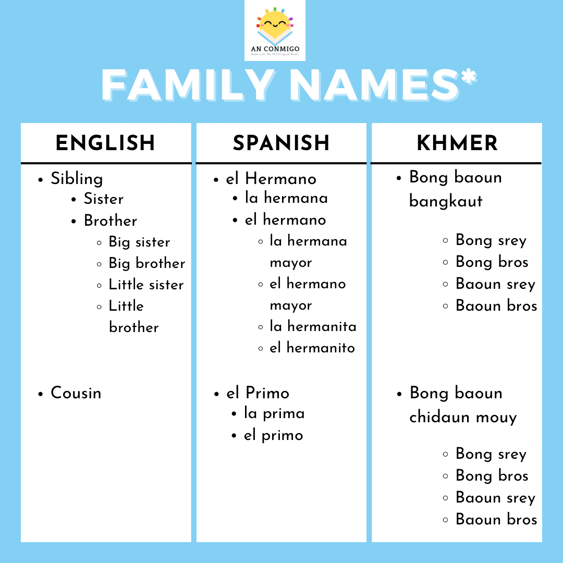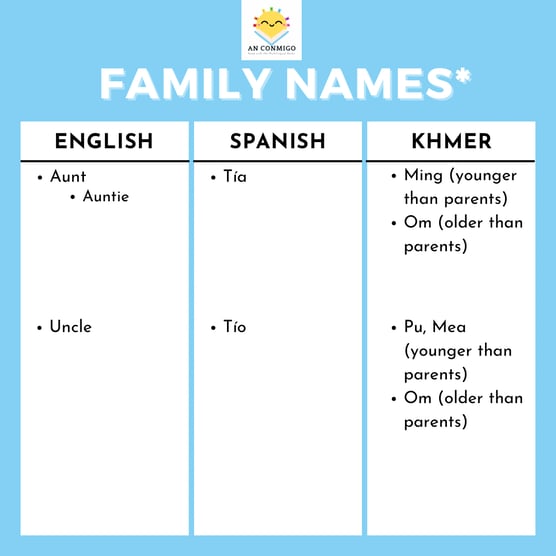Family Tree in Khmer, English and Spanish.
Part 1 of Family Names
5/19/20242 min read
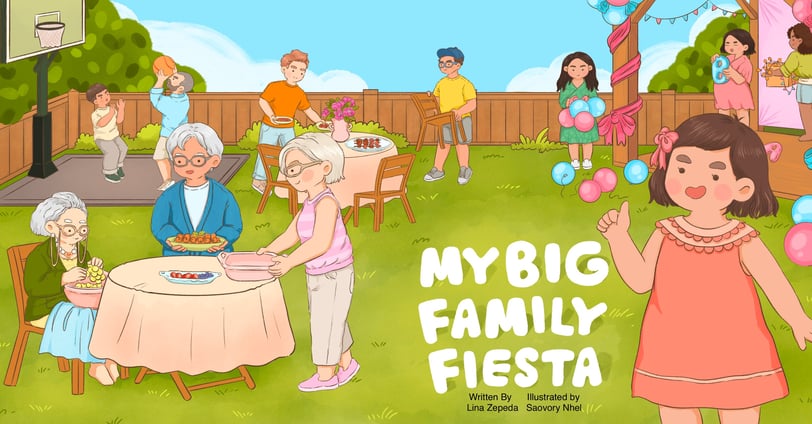

Learning the Names of Family Members in Spanish, Khmer, and English
Learning the names of family members in different languages can be a fun and educational activity for children. It not only helps them expand their vocabulary but also introduces them to different cultures and languages. In this blog post, we will explore how to teach your children the names of family members in Spanish, Khmer, and English using a customizable Canva template to create family cards.
Why Teach Family Members in Different Languages?
Our newest book “My Big Family Fiesta” celebrates a multicultural family whose members come from different countries and speak 3 languages: English, Spanish and Khmer. Teaching children the names of family members in different languages has numerous benefits. First and foremost, it promotes cultural diversity and understanding. By learning the names of family members in Spanish and Khmer, for example, children gain exposure to different linguistic and cultural traditions.
Additionally, learning family members' names in different languages can improve children's language skills and cognitive development. It enhances their ability to recognize and remember words, expands their vocabulary, and improves their overall communication skills.
Creating Family Cards with Canva
Canva is a user-friendly online graphic design tool that offers a wide range of templates, including customizable family card templates. Here's a step-by-step guide on how to create family cards using Canva:
Click on our Canva template.
Sign up for a free Canva account or log in if you already have one.
Change the text to match your family. Use as many cards as you like and duplicate pages to create more cards.
Customize the font, color, and size of the text to make it visually appealing.
Add photos family members to the cards. We added photos digitally and removed the backgrounds, but you can definitely use printed photos too.
Save and download your family cards.
Print them and put them in a photo album or laminate them to use as cards.
Teaching Children the Names of Family Members
Once you have created the family cards, it's time to engage your children in the learning process. Here are a few tips to make the activity more interactive and enjoyable:
Show the family cards to your children and ask them to identify the family members in each language.
Encourage your children to repeat the names of family members aloud in Spanish, Khmer, and English.
Play memory games with the family cards by turning them face down and asking your children to match the names with the corresponding family members.
Practice using the names of family members in sentences. For example, ask your children to say, "My grandmother is called 'abuela' in Spanish."
Reinforce their learning by incorporating the names of family members in everyday conversations.
By incorporating these interactive activities into your language learning routine, your children will not only memorize the names of family members but also develop a deeper understanding and appreciation for different languages and cultures.
Learn how to say it
Every family is different and some family use nicknames for their family members. The following videos show the formal names for family members followed by their more casual versions. The last 2 videos cover some family names that are not in the book.
